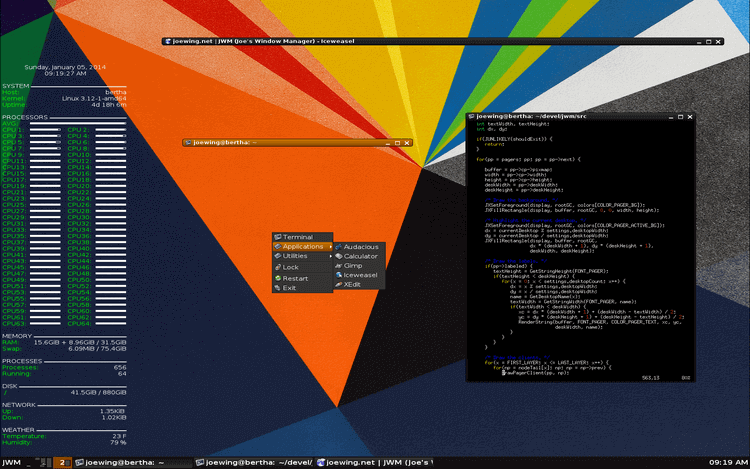


It also uses a simple plain text configuration file that is easy for new users and people without programming experience to read. I3 tends to work well with a lot of external programs and accessories. It’s super popular, easy to use, and the documentation is great. If you’re on Linux, and you’ve never used a tiling window manager before, pick i3. This is a very small sampling, so if you have a favorite that’s not listed here, it’s just because the goal here is to be as simple as possible and not overwhelm new users. They’re more popular on Linux, and easier to make for Linux with the available open source toolkit. Linux has the widest array of tiling window managers. Plus, you’ll have an easier time finding help, should you need it. This way, you can be sure that it’s still being developed and maintained. It’s best to pick one that’s popular and well documented. They’re fairly lightweight and simple, so a lot of people make them. There are an insane amount of tiling window managers out there. You can create your own hotkey combinations for just about anything. Keep in mind that with most tiling window managers, nothing is off limits. There is a lot more configuration that you can do. Pressing the mod key and the number 1 would take you to workspace 1. Mod and a number usually moves between workspaces. Then, you’d add another key like Shift to the mix to change the position of those windows. Most tiling window manager users prefer to us Vim as the basis of their configurations, using the h, j, k, and l keys along with Mod to move around. Usually, the “Mod” key is Alt or the Windows key. That key lets the widow manager know that you’re using a command instead of the plain key. One thing all configurations have in commons is a “Mod” key. A lot has to do with your configuration, though. Navigating a tiling window manager is different, depending on the window manager and how you configured it. This is probably one of the simplest ways to tile. You can toggle between horizontal and vertical tiling at any time. It will continue to divide the screen equally in one direction. So, it’s not a top priority to pick a window manager that tiles a specific way. Usually, any tiling algorithm is only a default method that you can override manually. Usually, the tiling is handled by an algorithm. You can even map hotkeys to launch all of your most used applications. Everything that you do can be handled through hotkeys. There’s no need to use a mouse to navigate through a tiling window manager. So, you can get floating behavior from a tiling window manager, but it doesn’t work the other way around.Īnother huge advantage comes from keyboard controls and navigation. Have you ever tried arranging windows and keeping them arranged with a floating window manager? It doesn’t work well, if at all.


 0 kommentar(er)
0 kommentar(er)
